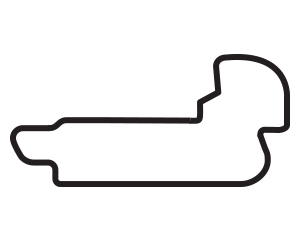Bump Day at Indy produces twists, turns
MAY 20, 2012
Of the two qualification days for the Indianapolis 500, Pole Day may have the prestige and the glamour, but Bump Day is the one that true “grease-under-the-fingernails” racers live for. It’s a moment for the little guy or the back-of-the-pack to get a chance to be the story of the day.
And Bump Day has produced some of the most memorable moments in the 96-year history of the Indianapolis 500. Even though this is a new chassis/engine year in the IZOD IndyCar Series, rest assured a story will develop throughout the day that will be unexpected on Bump Day at the 96th Indianapolis 500.
So let’s take a quick look at some of the most memorable Bump Days in recent Indy 500 history.
1993 – Bobby Rahal misses the race as the defending national champion
Bobby Rahal arrived at the Indianapolis Motor Speedway as the defending CART series champion and was usually considered a contender for the Indianapolis 500 victory. But in 1992, Rahal purchased Patrick Racing to form Rahal-Hogan Racing and took over the TrueSports chassis program attempting to bring an American-made chassis to the Indianapolis 500 that year. But the chassis had issues and could not get up to speed relative the competition and that left Rahal in jeopardy of missing the race.
Team Penske president Tim Cindric was the team manager of Rahal-Hogan Racing and recalled the dilemma that Rahal’s team faced entering Bump Day in 1993.
“When you look back to 1993 and in 1995 those were the two Bump Days in recent history that stick out the most,” Cindric said. “With Bobby, it was simply a case of having a car that was not fast enough. We were trying to qualify an old TrueSports car there with a Chevy A engine. All we were trying to do was give him a run between 5:45 p.m. and 6 p.m., and he got that. The car just wasn’t fast enough.
“I remember playing golf with Bobby Rahal on Carburetion Day, which was a pretty odd situation.”
The driver that knocked Rahal out of the field on Bump Day was Eddie Cheever, who was out of chances with team owner Norm Turley and was ready to leave the Indianapolis Motor Speedway before rival team owner John Menard offered him a chance in his car.
“I think I have the record of making the most attempts to get into the field that year in 1993,” Cheever said. “There were about two hours left, and John Menard came into the pits and said, `Do you want to drive?’ I said, `Drive what?’ I got in the car, kept my foot down and qualified, and there wasn’t four minutes left on Bump Day. I didn’t want to go home, and Bobby Rahal didn’t want to go home. I was so worn out by the end of it I thought I had already run a race, it was so intense. I was very relieved it was me that made it and not Bobby Rahal.”
1995 – The most successful team in Indianapolis 500 history fails to get any of its drivers into the race
When Penske Racing arrived at the Indianapolis Motor Speedway in 1995, it was already the most successful team in the history of the Indy 500 with 11 victories at that time. Team owner Roger Penske’s car had won three of the previous four Indy 500s, including two-straight with Emerson Fittipaldi winning in 1993 and Al Unser Jr. driving the famed Mercedes-Benz 209 pushrod engine to a decisive victory in 1994.
But when the competitive advantage of the 209 cubic-inch pushrod was legislated out of existence by USAC rules – the governing body of the Indy 500 at that time – the Penske PC-24 chassis combined with the Goodyear tires had major handling issues at the Indianapolis Motor Speedway, leaving the team in jeopardy of missing the race.
Rahal-Hogan Racing came to Penske’s aid the final week of practice and qualifications with two Lola chassis.
“It was a real eye-opening experience in 1995 when I was with Rahal’s team, and we ended up loaning Roger Penske and his group our backup Lolas that year,” Cindric said. “We watched a team that had no experience whatsoever on Bump Day have a hard time with how to play the line, how to get the opportunities, how to make decisions whether to wave off or make a run. Emerson Fittipaldi was fast enough to make the show that year, and they waved him off. In a lot of ways, it was a confidence-booster for me at that age knowing the best of the best hadn’t been through that. After watching a lot of the teams my dad had been involved with as an engine builder for Herb Porter, I always knew how the line worked. The Joe Saldanas and those guys all had to make the show on the last day, so I really understood how it all worked.”
As the team manager at Rahal-Hogan Racing, it was the first time Cindric had interfaced with Roger Penske. Four years later, at the end of the 1999 season, Penske hired Cindric as Team Penske president to help return the IndyCar team to glory.
2004 – Tony Stewart adds a bit of drama by attempting to climb into A.J. Foyt’s car at the end of Bump Day
With the field set at 33 cars early on Bump Day and no others drivers left to make a qualification attempt, five-time Indianapolis 500 starter and 1996 Rookie of the Year Tony Stewart arrived at the Indianapolis Motor Speedway on Bump Day as a NASCAR driver. He was already the 2002 NASCAR Cup champion and was at Indy as a spectator from his suite. He stopped in to see his racing hero, A.J. Foyt, and the two of them began to brainstorm a way to let Stewart attempt to qualify one of Foyt’s spare cars.
The idea grew and word began to spread around Gasoline Alley that Stewart was going to attempt to bump Robby McGehee out of the Indianapolis 500 starting lineup and do an unplanned Indy 500/Coca-Cola 600 double the next weekend hoping to get NASCAR team owner Joe Gibbs to give him permission after he had made the field.
Stewart was suited up and ready to climb into Foyt’s race car before Stewart’s agent informed him that Chevrolet officials had blocked the move. At that time, Stewart competed for a Chevy team in NASCAR and Foyt was a Toyota team at the Indy 500. Stewart’s contract would not allow him to compete in any racing series for a rival manufacturer.
“It was interesting to watch, and guys like me were hoping Tony Stewart would do it,” Cindric said. “But at the end of the day, it didn’t seem like it was ever a real thing with the situation Tony was involved in.”
Ironically, Joe Gibbs Racing would become a Toyota team in NASCAR in 2008.
2010 – Sebastian Saavedra officially makes it into the field while at Methodist Hospital
Sebastian Saavedra discovered he had made the Indianapolis 500 starting lineup from the emergency room at Methodist Hospital in Indianapolis. Saavedra, who had crashed his car late in practice, had been bumped out of the race three times only to be reinstated after Paul Tracy and Jay Howard withdrew speeds that would have kept them in the starting lineup, only to go slower on their final attempts.
“Three times we thought we were out when we crashed,” said team owner Bryan Herta. “We were pretty confident that we were going to have to bump our way back into the race. So when we crashed we thought, ‘Oh, that's it.’ And then we got bumped out the first time. And, OK, you're out, that's it. And then time withdrew in front of us, we got back in. We got bumped out a second time.
“In the dying minutes, Steve Newey (Herta’s partner) and I hopped on the golf cart with Colin Dyne from William Rast, our sponsor, and we went down to the tech area where they're sending the cars out, because we thought are we in? We were confused. We were like looking at each other, are we really back in?
“And I can't say I've ever experienced a range of emotions in one week, let alone one day, that we have through this whole process.”



















